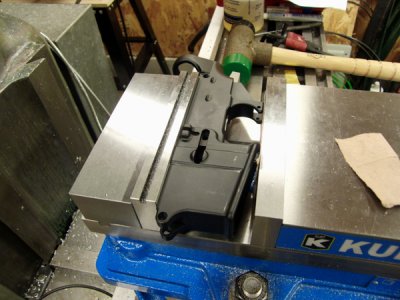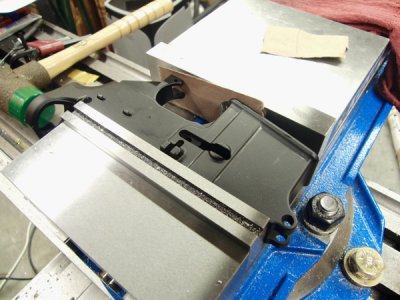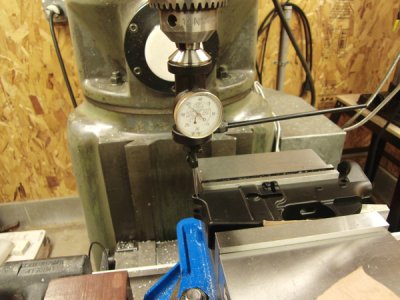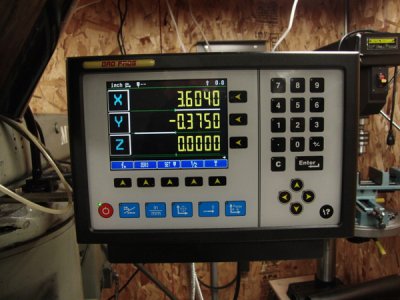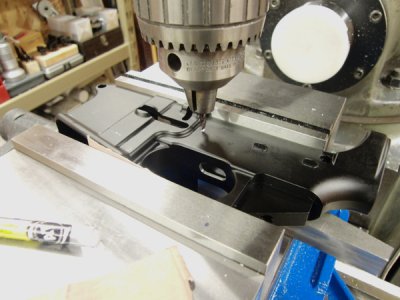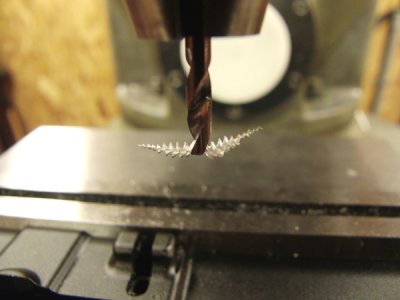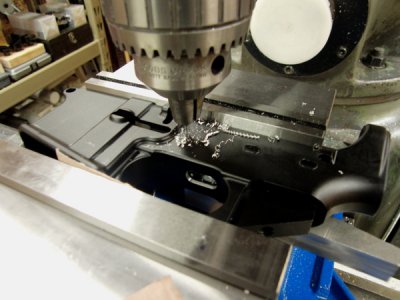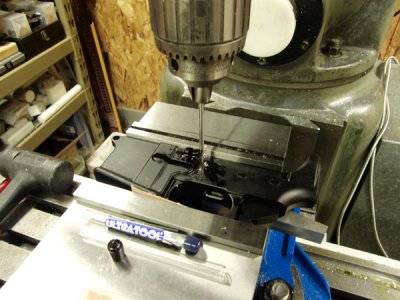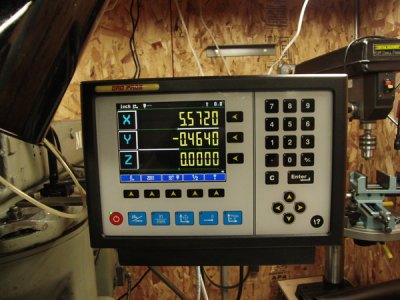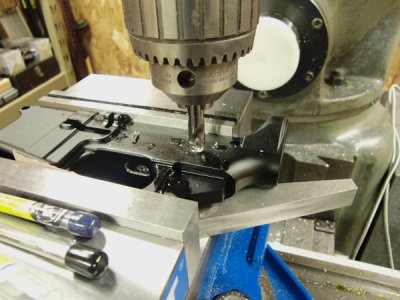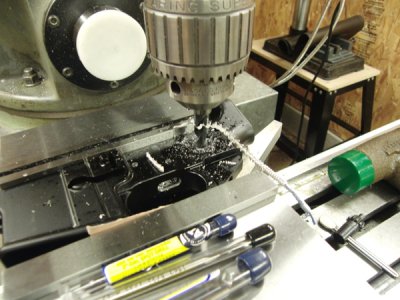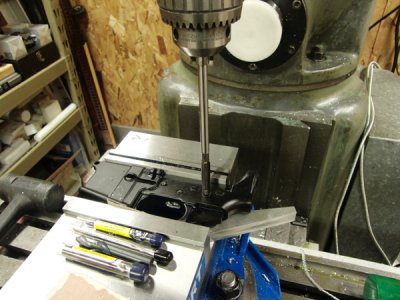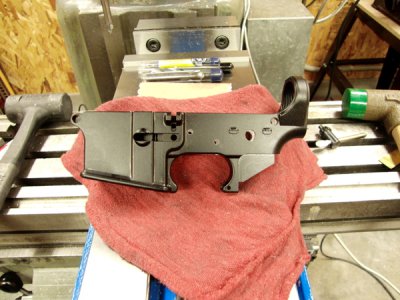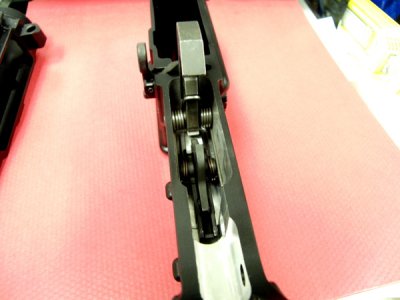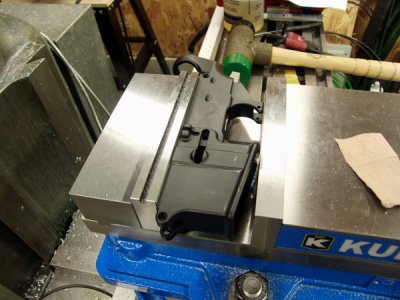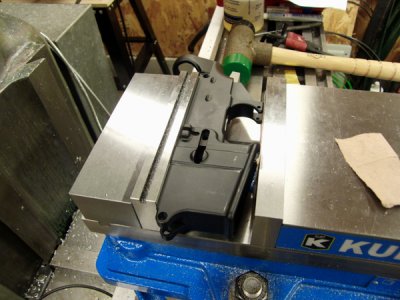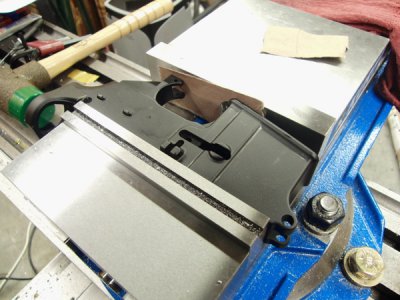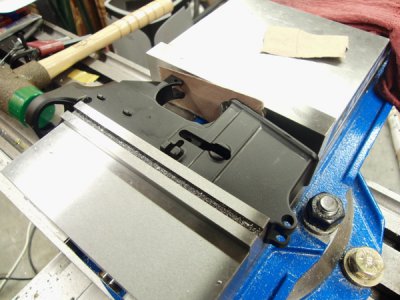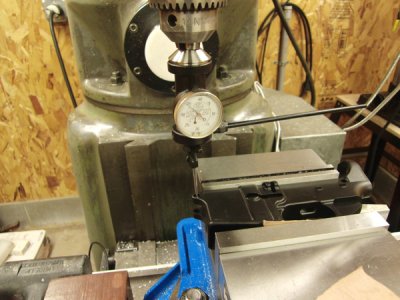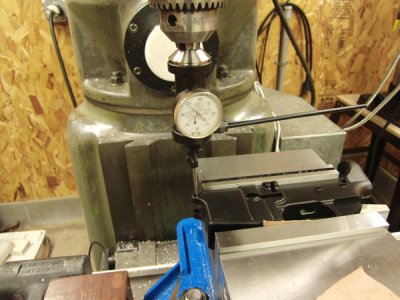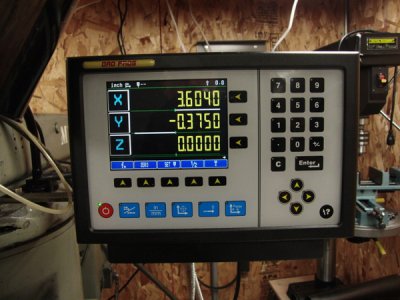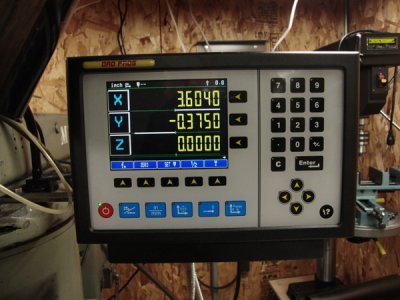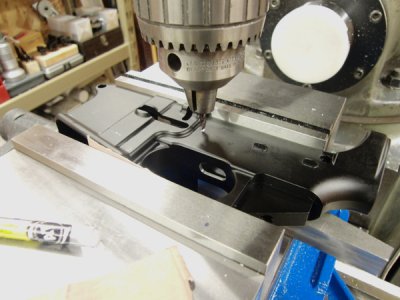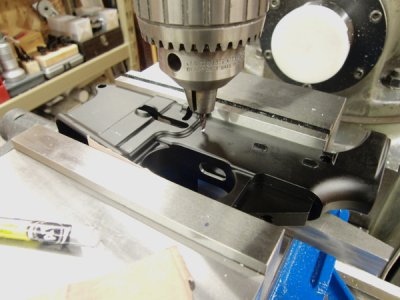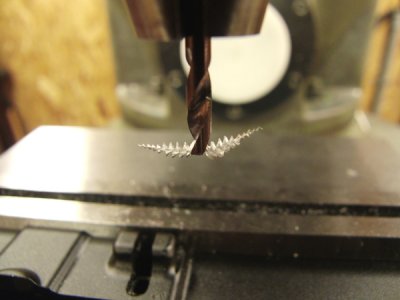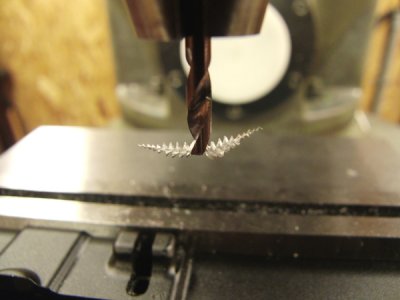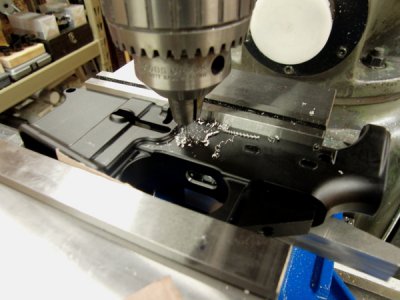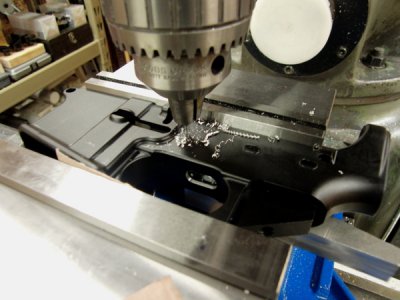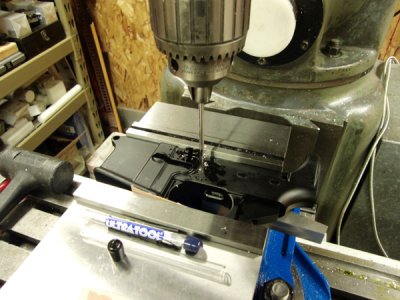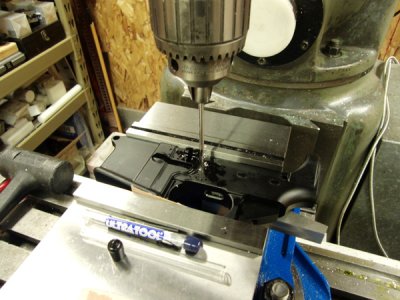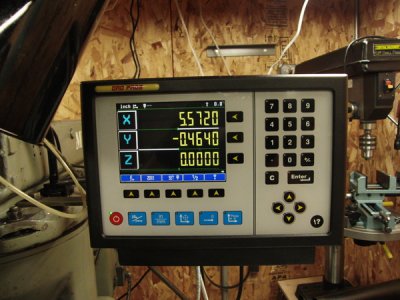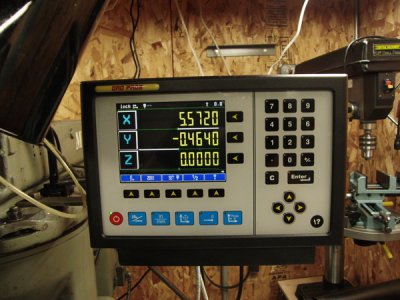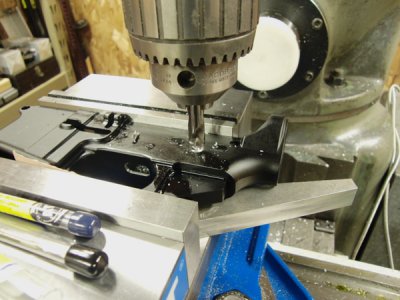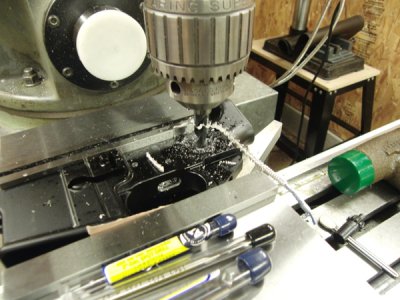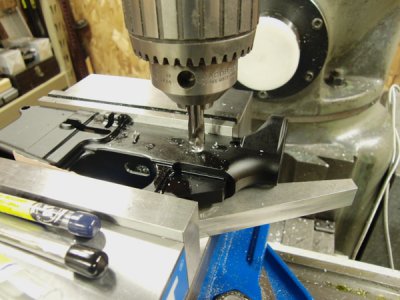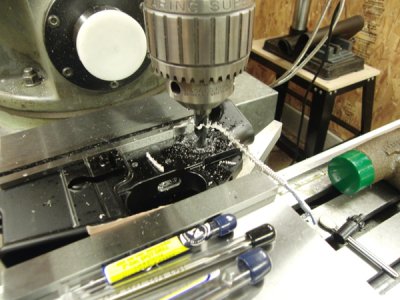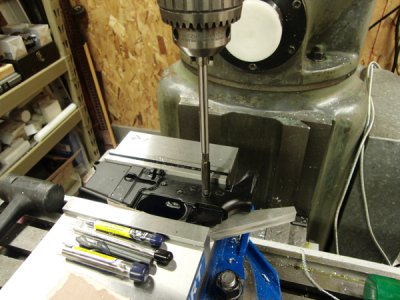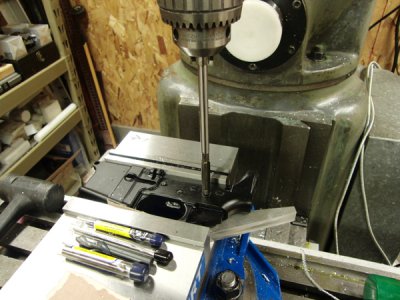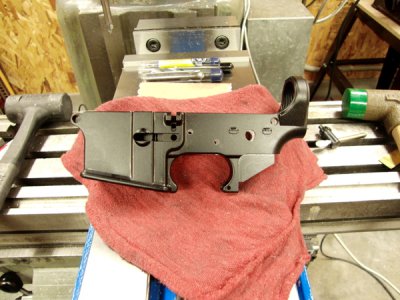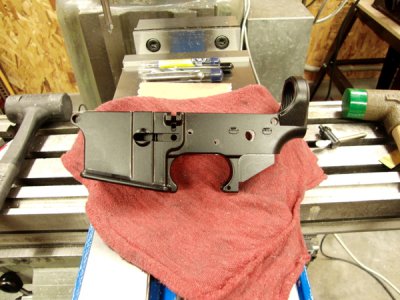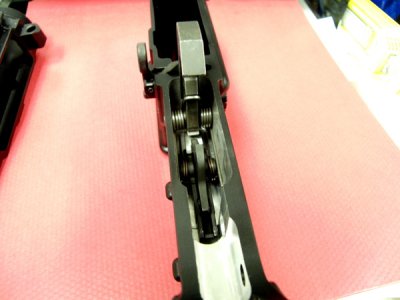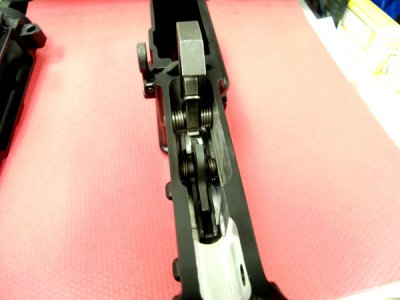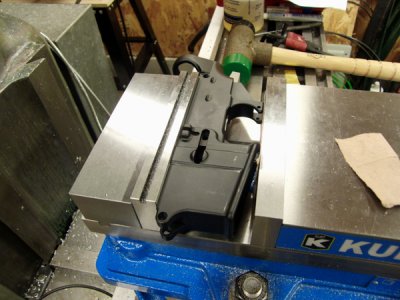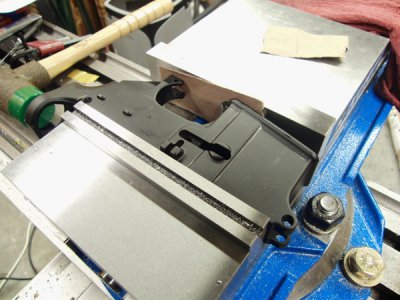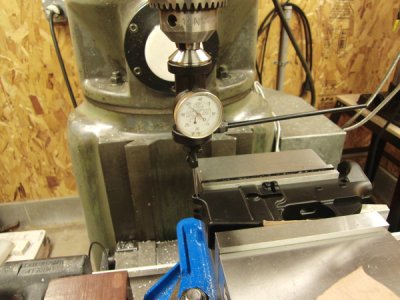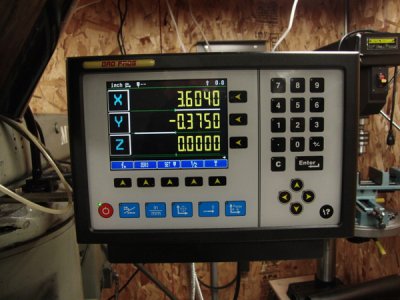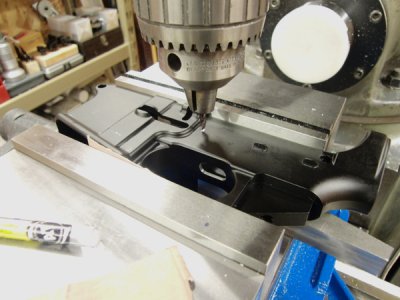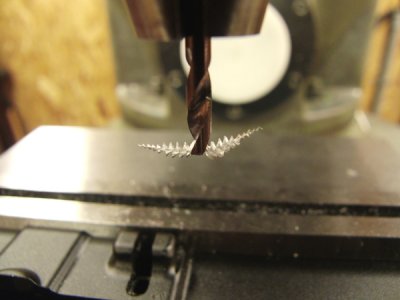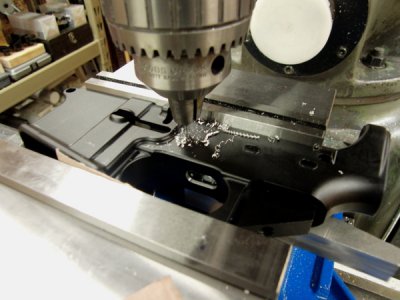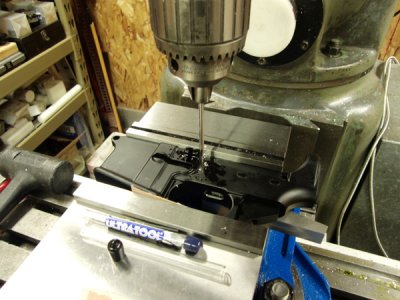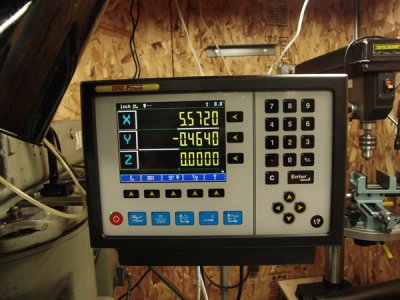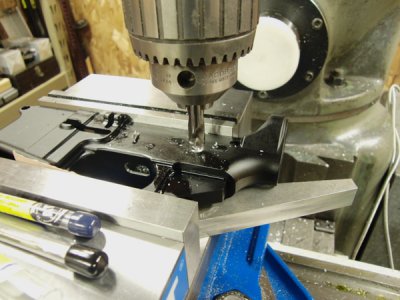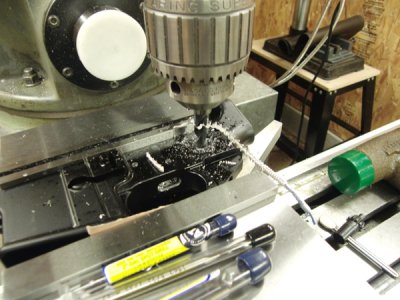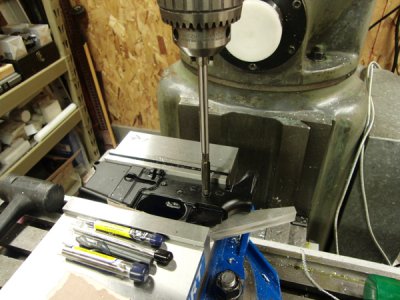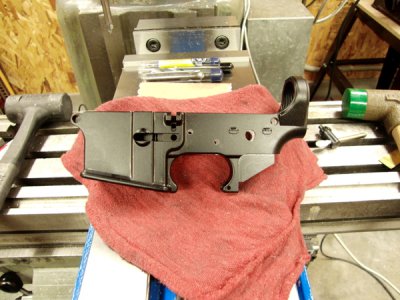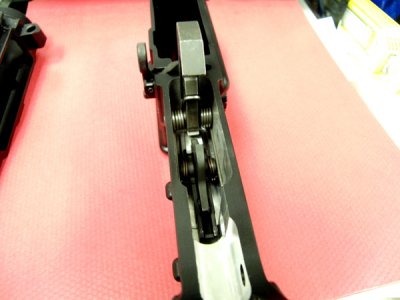- Joined
- Apr 6, 2011
- Messages
- 2,082
Finally received my spot drills and 5/32" reamers so I finished up my first lower yesterday. I had some "difficulties" setting up the lower in the vise and getting it properly situated. Putting a DTI on it after it was in the vise I was getting some odd variations front to back and top to bottom (it was on it's side so those terms are relative). After an hour or so of changing the way it was held, shimming, and other general messing around with it I decided that I didn't really know if the casting, especially after milling the pocket, was all that perfect in it's dimensions (and my "anal retentiveness" was getting in the way of actually making holes).
So I squared it up using the vise jaw as a reference and proceeded onward. I then spent an appreciable amount of time with a Blake co-ax indicator trying to find the center of a .251" hole. I don't have complete faith in the Blake and re-did it a number of times before I was satisfied with the results. First time I used it on a hole that small so I'm sure the more I use it the better it will go.
Being as things were not as "perfect" as I would like, and figuring this one would be a "test case" anyway, I ended up just spotting the near side, drilling straight through both sides, then followed that with the proper sized reamer. After I was finished I installed the trigger, hammer, and safety switch to test sizing and function. The holes came out within measurable tolerances and everything works as it should. The lower will now be dis-assembled until I receive my Brownell's order which contains a spray can of Aluma-Hyde II to coat the inner cavity and hopefully protect it from oxidation. I'd be curious to hear what others might be using for this.
Always waiting,
-Ron
So I squared it up using the vise jaw as a reference and proceeded onward. I then spent an appreciable amount of time with a Blake co-ax indicator trying to find the center of a .251" hole. I don't have complete faith in the Blake and re-did it a number of times before I was satisfied with the results. First time I used it on a hole that small so I'm sure the more I use it the better it will go.
Being as things were not as "perfect" as I would like, and figuring this one would be a "test case" anyway, I ended up just spotting the near side, drilling straight through both sides, then followed that with the proper sized reamer. After I was finished I installed the trigger, hammer, and safety switch to test sizing and function. The holes came out within measurable tolerances and everything works as it should. The lower will now be dis-assembled until I receive my Brownell's order which contains a spray can of Aluma-Hyde II to coat the inner cavity and hopefully protect it from oxidation. I'd be curious to hear what others might be using for this.
Always waiting,
-Ron


